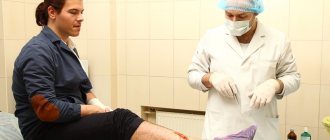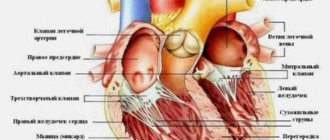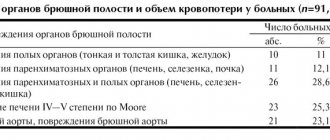Home — For the public
- Map of medical organizations
- Vaccination
- Clinical examination
- Fluorography
- Addresses and opening hours of clinics
- Emergency rooms
- Oncology
- Where to take an HIV test
- Healthy child's office
- Services
- Prevention of CVD
- Disease Prevention
- World Patient Safety Day
- Newspaper "Medical News"
- specialist
- School of Health
— All about vaccination
- Appeal to parents
- Opening hours for vaccination clinics in Yekaterinburg
- Opening hours of vaccination clinics in the Sverdlovsk region
- Vaccinations: I want to know everything
- Child vaccination
- Regional vaccination calendar for adults
— Vaccinations: I want to know everything — How does vaccination help build immunity?
Every second a person encounters hundreds of bacteria and viruses that can lead to one or another disease. In addition, atypical cells constantly appear in the body, the further proliferation of which becomes the cause of malignant formations. Immunity is a defense mechanism. It protects against bacteria, viruses, and recognizes foreign tumor cells.
The immune system is represented by organs such as: lymph nodes, spleen, thymus and special blood cells. It performs the following tasks:
- recognizes bacteria or viruses that have entered the body;
- begins the synthesis of antibody proteins;
- remembers the pathogen in order to “fight it back” in the future.
Blood elements play an important role in protection: phagocytes, T- and B-lymphocytes. Each group of cells does its own job.
Phagocytes are the first cells to appear at the site of infection. They capture, absorb and digest foreign agents. They cope only with fairly “weak” aggressors, whose visit takes place for a person without any symptoms.
Digesting “foreigners,” phagocytes release substances called cytokines, which attract more serious artillery to the focus—lymphocyte cells. There are 2 main groups of lymphocytes.
B lymphocytes synthesize 5 groups of immunoglobulin proteins. For protection against a specific infection, types M and G are important. Immunoglobulins are stored in the body and protect a person from repeated cases of the disease for a long time. Vaccination uses immune memory: a person is injected with antigens or weakened pathogens. If there is a second attack, the defense mechanism is activated immediately.
T-lymphocytes perform different tasks: one group helps B-lymphocytes synthesize antibodies, the second destroys diseased or atypical cells of the body itself, and the third strengthens or weakens the immune response.
What is active and passive immunity
A person can obtain antibodies in various ways. Antibodies enter the body passively through the placenta during pregnancy, with mother's milk after birth, or during emergency immunization with ready-made immunoglobulins. Such immunity is unstable and needs to be “renewed” quickly: antibodies protect only while they circulate in the bloodstream. They do not reproduce on their own.
Active immunity occurs after an infectious disease or vaccination, since entry into the body of the pathogen itself or its fragments triggers the formation of new colonies of B-lymphocytes. These cells quickly synthesize antibodies and protect the body. So a person either does not get sick or suffers the infection easily.
The duration of active protection depends on the type of pathogen, so a person can suffer some diseases only once, while others occur repeatedly. The same statement is true for vaccinations: some vaccines are administered 1-2 times throughout life (for example, measles, rubella vaccination), while others require revaccination after a certain period of time (for example, diphtheria, tetanus - every 10 years).
What vaccines are there?
A combination of immediate but short-lived immunity through passive immunization and long-lasting immunity through active immunization is possible. This type of immunization is called simultaneous immunization.
Active immunization is the administration of a vaccine to form long-term protection for the body. Live vaccines are contraindicated in patients receiving immunosuppressants, fever, or pregnancy.
Passive immunization creates temporary immunity in the body by introducing foreign immune substances such as antibodies. Doctors often use this type of immunization when they suspect tetanus. This technique weakens a possible infection, and an active one protects against future infection. If diphtheria is suspected, simultaneous immunization is also used. Sometimes autovaccination is used for infectious diseases. An autovaccine, prepared by isolating bacteria from a sick individual and culturing them, is reintroduced to the patient to stimulate the formation of antibodies.
Vaccines and vaccine-preventable diseases
There are a huge number of viruses and bacteria dangerous to humans in the world. Thanks to vaccination, some diseases (for example, smallpox) were defeated. Other infections are under control - pathogens circulate in the environment, but outbreaks and epidemics rarely occur.
Unfortunately, infections cannot be prevented with proper nutrition, hardening, etc. Vaccination is the only way to protect children and adults from the disease.
The following are common vaccine-preventable diseases:
- Tuberculosis. It affects the lungs and bronchi, less commonly the joints and the genitourinary system. Dangerous due to the development of generalized forms, meningitis. Mycobacterium tuberculosis is extremely resistant to most drugs.
- Whooping cough is a disease that affects the respiratory tract. The toxins of the pathogen irritate the cough center, provoking attacks of painful coughing with respiratory arrest and vomiting. May be complicated by brain damage or episyndrome.
- Diphtheria is a disease in which toxins from the pathogen circulate in the blood, having a detrimental effect on the cardiovascular and nervous system. More often, patients develop croup - a dense film on the tonsils that blocks the lumen of the respiratory tract. Complications include shock, paralysis of the soft palate, damage to the heart and kidneys.
- Poliomyelitis is an acute intestinal infection that affects the central nervous system. Breathing is impaired, paresis and paralysis develop. The changes are permanent; more than 80% of those who have recovered from the disease remain disabled. It is almost impossible to cure this disease.
- Measles is an extremely contagious viral disease. It affects the respiratory tract with the development of bronchitis, false croup, and pneumonia. The central nervous system often suffers - meningitis, encephalitis. Deafness may develop. There is no specific treatment for measles, and the mortality rate among unvaccinated children is high.
- Rubella is a viral infection characterized by skin rash, swollen lymph nodes, and fever. It is most dangerous for expectant mothers - infection leads to severe developmental defects (heart defects, deafness).
- Tetanus is an infectious disease in which bacterial toxins have a toxic effect on the nervous system. Death occurs from respiratory paralysis, sepsis, myocardial infarction. Mortality is high. The entry gate is damaged skin (wounds, abrasions, etc.) - this means that anyone can accidentally become infected.
- Mumps (“mumps”) is an inflammation of the parotid salivary glands. Children get sick more often; can be severe - every tenth person develops meningitis, and hearing loss is possible. Boys who have had mumps often experience inflammation of the testicle, which leads to impaired fertility.
- Viral hepatitis B spreads through sexual contact, household contact, medical procedures, and the placenta. The disease in 60-90% is chronic and leads to cirrhosis or primary liver cancer.
The search for ways to combat infectious diseases remains relevant today. But despite the active work of specialists in the field of pharmacology, specialists have not been able to find drugs that can stop the development of certain ailments.
But doctors were able to find an effective method of prevention to prevent infection and subsequent illness. Until now, the only method to obtain the desired result remains immunization of the population.
What is population immunization and why is it carried out?
A procedure such as immunization is quite common in modern society. This is a process aimed at acquiring immunity against common infections and giving the body the ability to resist the effects of infectious agents.
The desired result is achieved through the use of vaccines of different effects. Vaccination compositions approved by the World Health Organization and the Ministry of Health are used to vaccinate the population.
The essence of immunization is the introduction of a vaccine into the body in the form of weakened, dead or living microbes in order to provoke a response from the immune system.
Faced with a weakened pathogenic microflora, the body begins to actively produce antibodies, which will subsequently play the role of a protective shield when encountering pathogenic microbes in real life.
Is there any difference from vaccination?
Immunization and vaccination are different terms intended to refer to the same process. These words are used as synonyms.
Therefore, if the doctor sent the patient not for vaccination, but for immunization, the latter should not be afraid. In this case, we are talking about the same vaccination aimed at preventing a specific infectious disease or group of diseases.
Kinds
To achieve the desired protective effect, active and passive immunization methods are used. The listed methods differ in the way they influence the body, the duration of the effect and the situation in which the use of one or sometimes the type of medical assistance is indicated.
Active immunization involves the administration of an antigen in the form of live, weakened, or killed pathogens designed to stimulate a response from the immune system.
The result in the form of a sufficient amount of antibodies produced by the human immune system appears only after 2 weeks. However, the effect of active immunization lasts quite a long time: from 1 year to several decades.
To consolidate the effect, revaccination is carried out in accordance with the time limits established by the State Vaccination Calendar. Passive immunization is the introduction into the body of ready-made antibodies to any pathogens of infectious diseases.
This type of immunization gives an almost immediate effect, so it can be used in cases where the disease has already developed. Despite the quick results, the effect of passive immunization is short-lived. It lasts for a period of 1 to 6 weeks. Therefore, if it is necessary to obtain long-term protection, an active method is used.
Rules
Immunization is a fairly serious undertaking that cannot be carried out just like that:
- Firstly, the timing in which a person is given an injection is important. Strict adherence to age criteria during the immunization process makes it possible to protect a person from infections to which he is most susceptible at a certain period of life;
- secondly, even if emergency immunization was required due to an outbreak of an epidemic, the procedure should still be carried out only after examination by a doctor and under his guidance;
- thirdly, before each vaccination, a person must undergo a general examination by a doctor;
- and fourthly, it is important to follow the rules for storing drugs used in the immunization process.
It is also important to follow the rules for preparing the composition for vaccination.
What kind of immunity is caused by immunoprophylaxis using a vaccine and serum?
The immunoprophylaxis provided by the use of serum and vaccine is slightly different. Both the first and second variants of the drug cause a persistent immune reaction to the pathogen.
However, due to the difference in composition, the resulting effect will also be different. After completing the full vaccination cycle, the immune system’s reaction to pathogenic microflora will appear in a couple of weeks and will last from a year to several years. In the case of using serum, the effect will be immediate and just as strong, but short-term (from 1 to 6 weeks).
How long does it take for the body to become immune to infection due to immunization?
It all depends on what type of drug was used by the specialist and for what purpose. If a vaccine was used, immunity to infection will appear in a couple of weeks and will persist for many years.
If serum was used, immunity will appear immediately after administration, since the drug contains ready-made antibodies.
However, the result will only last for the next 6 weeks. After this period is completed, the immune system will lose its ability to resist pathological microflora.
Immunization in the Republic of Belarus.
Currently, within the framework of the National Preventive Vaccination Calendar, immunization against 12 infectious diseases is carried out:
- viral hepatitis B;
- tuberculosis;
- whooping cough;
- diphtheria;
- tetanus;
- polio;
- Haemophilus influenzae infection type b (Hib infection);
- measles;
- parotitis;
- rubella;
- pneumococcal infection;
- flu.
The list of indications for immunization against pneumococcal infection of children has been expanded according to age, as well as children of other ages up to the age of 5 years who have one of the following diseases or conditions:
- immunodeficiency states;
- recurrent acute purulent otitis media (more than 3 episodes during the year);
- recurrent pneumonia;
- bronchopulmonary dysplasia, congenital defects of the respiratory tract, etc.;
- heart defects requiring hemodynamic correction and enrichment of the pulmonary circulation;
- presence of a cochlear implant or planning for this operation;
- diabetes;
- bronchial asthma.
All vaccinations included in the National Calendar are given free of charge.
It has become possible to immunize children who have not previously received preventive vaccinations against hemophilus influenzae until they reach the age of 5 years and have one of the following diseases or conditions:
- chronic hepatitis;
- cirrhosis of the liver;
- chronic diseases of the kidneys, heart, liver;
- immunodeficiency states;
- cystic fibrosis.
In accordance with the Decree of the Ministry of Health of the Republic of Belarus dated May 17, 2018 No. 42 “On preventive vaccinations,” changes have been made to the tactics of immunizing children against viral hepatitis B, pertussis infection, diphtheria, tetanus, pneumococcal and hemophilic infections:
- regarding the introduction of the use of multicomponent ILS, including a component against Haemophilus influenzae to protect children in the first year of life;
- regarding changes in the timing of preventive vaccinations;
- in terms of specifying vaccination against Haemophilus influenzae and pneumococcal infections.
In addition to routine preventive vaccinations, immunization is carried out according to epidemic indications against 18 infections: rabies, brucellosis, chickenpox, viral hepatitis A, viral hepatitis B, diphtheria, yellow fever, tick-borne encephalitis, whooping cough, measles, rubella, leptospirosis, polio, anthrax, tetanus, tularemia, plague, mumps.
Epidemic indications mean:
- being in contact with a patient suffering from an infectious disease (suspected of an infectious disease), against whom preventive vaccinations are carried out;
- the presence, when carrying out professional activities, of the risk of infection by pathogens of infectious diseases, against which preventive vaccinations are carried out;
- the presence, in conditions of an unfavorable sanitary and epidemiological situation in the Republic of Belarus or on the territory of its individual administrative-territorial units, as well as on the territory of other states, of the risk of infection by pathogens of infectious diseases against which preventive vaccinations are carried out;
- the presence of the possible introduction of infectious diseases into the territory of the Republic of Belarus of the risk of infection by pathogens of infectious diseases against which preventive vaccinations are carried out;
- the presence of diseases (conditions) in which infection with pathogens of infectious diseases, against which preventive vaccinations are carried out, can lead to a complicated course of these diseases (conditions) or death.
Prophylactic vaccinations against infectious diseases for groups of children and adults not included in the National Calendar of Preventive Vaccinations and the List of Preventive Vaccinations for Epidemic Indications are carried out at the expense of citizens’ own funds or the employer’s funds.
To immunize the population on a paid basis, healthcare organizations and medical centers independently declare and purchase ILS from suppliers.
For information on the procedure for carrying out preventive vaccinations at the expense of citizens, it is necessary to contact territorial health organizations and medical centers.
Literature:
1. Resolution of the Ministry of Health of the Republic of Belarus No. 42 of May 17, 2021 “On preventive vaccinations.”
2.https://nikzrb.ru/health_view.php?row=123
Important information about vaccination
When thinking about whether to vaccinate themselves or their children, adults worry about the safety of the drugs, are interested in possible contraindications, and believe that the national calendar is “overloaded.”
How safe are vaccines? Vaccines usually contain the following components:
- Antigen. This can be a live, killed form of a virus, bacteria or fragments of a pathogen. This component “teaches” the immune system to recognize the enemy and produce antibodies against it.
- Preservatives and stabilizers to protect antigens during transportation or storage. There are vaccines without preservatives; they are used in pediatric practice.
- Some drugs contain adjuvant substances that enhance the immune response.
Each vaccine goes through several stages of clinical research: safety, metabolism, methods of elimination, frequency and severity of undesirable effects are studied. Next, immunogenicity is assessed - the ability to stimulate the synthesis of antibodies in response to administration. This parameter indicates the effectiveness of the drug and is estimated as a percentage. For example, when a flu vaccine is administered, antibodies are produced in 95% of those vaccinated. The higher the immunogenicity, the greater the likelihood that the population will be protected from an epidemic of the disease.
A safe and effective vaccine can be allowed into mass production and recommended for use. After drug approval, clinicians continue to monitor for adverse effects.
Popular hypotheses about the connection between vaccinations and diseases such as autism, cerebral palsy, and epilepsy have no scientific confirmation. Often, severe mental and neurological disorders first manifest themselves after 1 year of age, regardless of whether the baby has been vaccinated or not.
Can multiple vaccines be administered at the same time?
Mothers of infants worry that vaccinations “kill” their own immunity and can cause harm if administered simultaneously. In reality, every person encounters tens and hundreds of bacteria and viruses every day, and his immune system successfully copes with them.
Two-, three-, four-, and five-component vaccines are well tolerated by children and help develop immunity by the time the kids attend preschool institutions, clubs or sections. You can get complete information about the procedure for administering drugs from your pediatrician.
When should you refrain from vaccination?
Some people should delay vaccination or avoid it entirely. Temporary contraindications include:
- treatment of cancer (course of chemotherapy);
- decompensation of severe chronic diseases;
- acute infectious diseases;
- pregnancy and breastfeeding (but not all vaccines, for example against influenza, can be vaccinated in the 2-3 trimester of pregnancy);
- period less than 1 month from the last vaccination.
But there are also conditions in which vaccination can cause harm to health. This:
- autoimmune diseases;
- epilepsy, convulsive syndrome;
- allergy to vaccine components;
- poor tolerability of the previous dose of the vaccine.
Before administering the drug, the doctor examines the patient, measures body temperature, and collects an epidemiological history.
When is vaccination necessary?
The answer to this question mainly depends on the circumstances of the individual person's life.
People who have to stay outdoors for a long time need to be vaccinated against tick-borne encephalitis. Agricultural and forestry workers should be vaccinated not only against tetanus, but also against all zoonotic diseases. People with weakened immune systems are advised to get flu shots.
If you are going to visit tropical countries, find out what diseases you need to be vaccinated against.
Children must be vaccinated against childhood infectious diseases. Vaccinations are recommended in accordance with a special vaccination schedule for children.
Is it possible to get vaccinated during pregnancy?
Pregnancy in itself is not a contraindication for vaccination. A distinction should be made between routine and emergency vaccinations.
Seasonal influenza vaccination is routinely recommended. So the flu vaccine is not only allowed, but also recommended. It reduces the likelihood of a baby getting sick in the first six months of life by 60-65%.
In an emergency, therapeutic and prophylactic vaccination against rabies is possible in case of animal bites. The doctor weighs the dangers of vaccination against the risk of developing a deadly disease.
Vaccination is the most effective and safe way to protect adults and children from dangerous infections. The list of recommended vaccines is indicated in the National Vaccination Calendar. You can find out more information about the procedure for administration, rules for preparing for vaccination and possible undesirable effects from your doctor.
Is vaccination dangerous?
In children, the vaccine often causes a mild vaccine reaction, for example, a slight increase in body temperature, moderate soreness, redness and swelling at the injection site, and loss of appetite. Severe lesions are less common and are usually seen in children with chronic illnesses. Such children are vaccinated in a hospital under the supervision of a doctor. The most dangerous is passive immunization, when used, a foreign protein enters the patient’s body. If you have hypersensitivity to a foreign protein, serum sickness may occur. In mild cases, symptoms of serum sickness such as enlarged lymph nodes and urticaria are observed. In addition, allergic shock is possible, which is a common cause of death for the patient.









